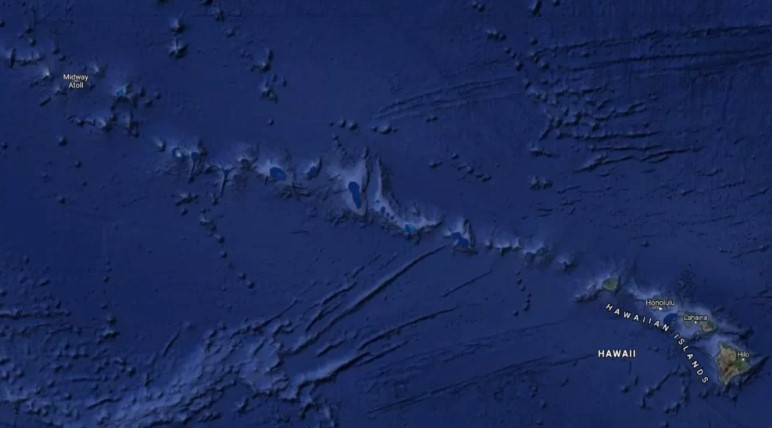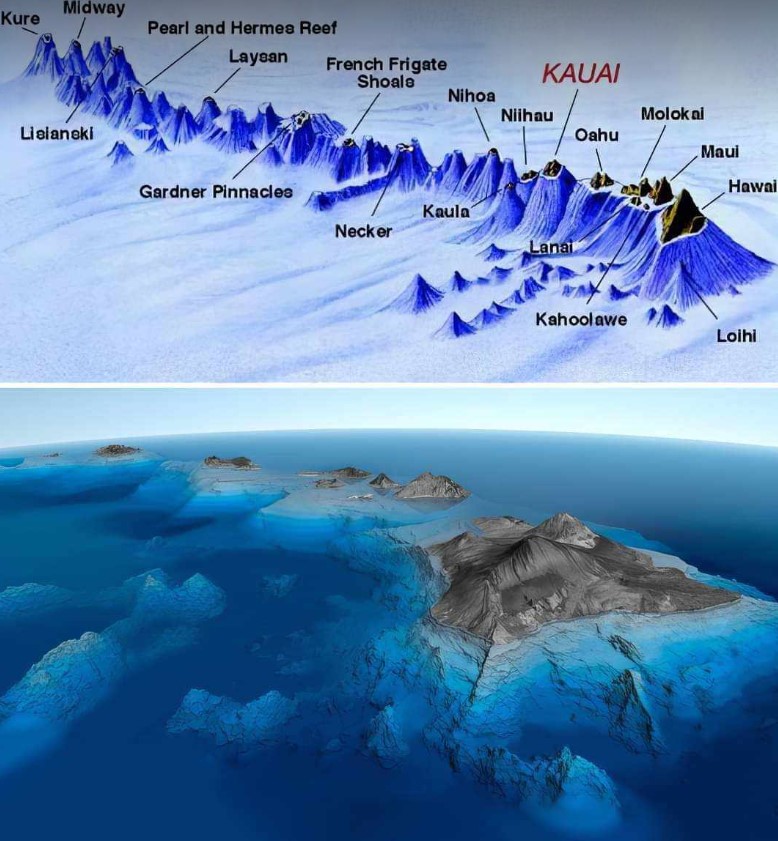The Pacific Plate is migrating northwestward at a rate similar to that of your fingernails – several millimeters each year.
This continuous plate movement over a local volcanic “hot spot,” or plume, has resulted in an assembly-line-style chain of volcanic islands.
They are known (really) as Hawaii.

The Hawaiian Islands (also known as the Hawaiian archipelago) are made up of eight major islands and 124 islets that run 1,500 miles northwest from the Big Island of Hawaii to Japan and the Aleutian Islands of Alaska, at the centre of the “Pacific Plate” on top of a “hot spot.”
The islands have a combined size of 6,459 square miles.
Hawaii, the newest island in the chain, sprang from the seafloor over a million years ago as five different volcanoes.
By erupting repeatedly, the five volcanoes formed thin layers of lava that built up over time, until the volcanic heads rose from the water – eventually becoming today’s Hawaii.
But how did five volcanoes come together to form one island?
They most likely erupted at separate periods, causing flows that merged with the flows of the other mountains, eventually resulting in the five summits constituting the singular island we see today.

Mauna Loa, the Big Island’s biggest volcano, covers about 51 percent of the island. Even yet, most people have a difficult time identifying it since the shield form makes it difficult to discern if you’re looking at a real mountain.
In fact, all of Hawaii’s volcanoes are called “shield volcanoes” because of their likeness to a warrior’s shield.
Molten lava rises from a hot place in the Earth’s crust and erupts from different vents and rifts on the surface, finally flowing down the gentle slopes into the ocean, layer by layer, over millions of years.
The submarine volcano known as Lo’ihi is located just 18 miles off Hawai’i’s southeast coast, as previously noted.
Lo’ihi is a seamount that is now erupting at a depth of 3,178 feet below the ocean’s surface.
When Lo’ihi rises from the sea, it will most likely combine with Kilauea (which, in theory, will be considerably larger by then) to become the sixth peak on Hawai’i’s biggest island.
That won’t happen quickly, though; it’ll probably take 50,000 years or more.
Geologists think Haleakala formerly formed a continuous landmass with Lanai, Molokai, and Kahoolawe – known as Greater Maui – not just to the west of Maui, but also to the east (Maui Nui).
The submergence of that landmass caused the volcanic body to move away from the Hawaiian hot spot, causing significant chunks of the Big Island to vanish into the Pacific.
The four big islands that we see now are the outcome of this process.
